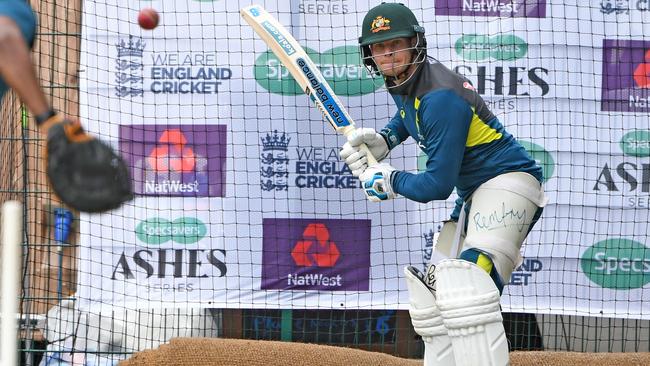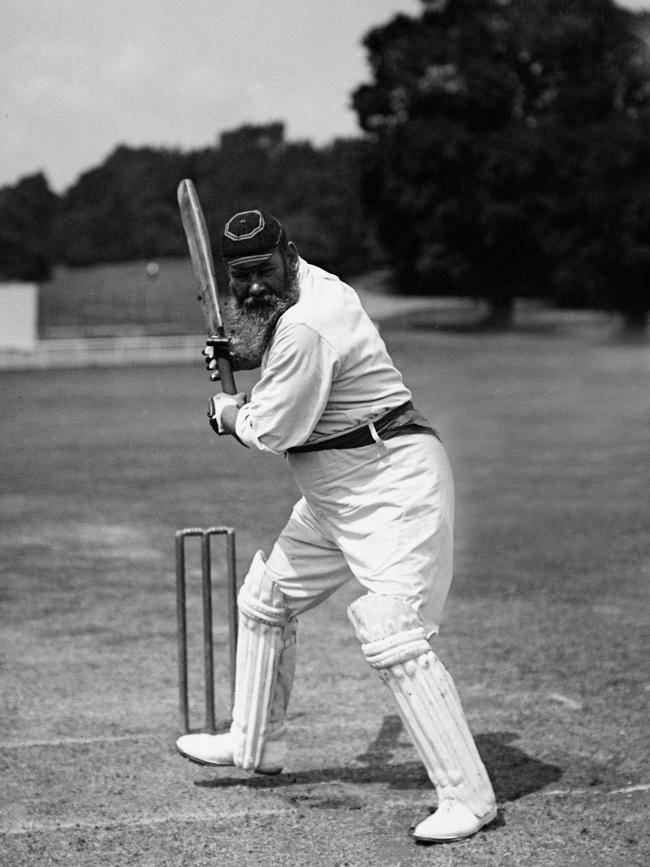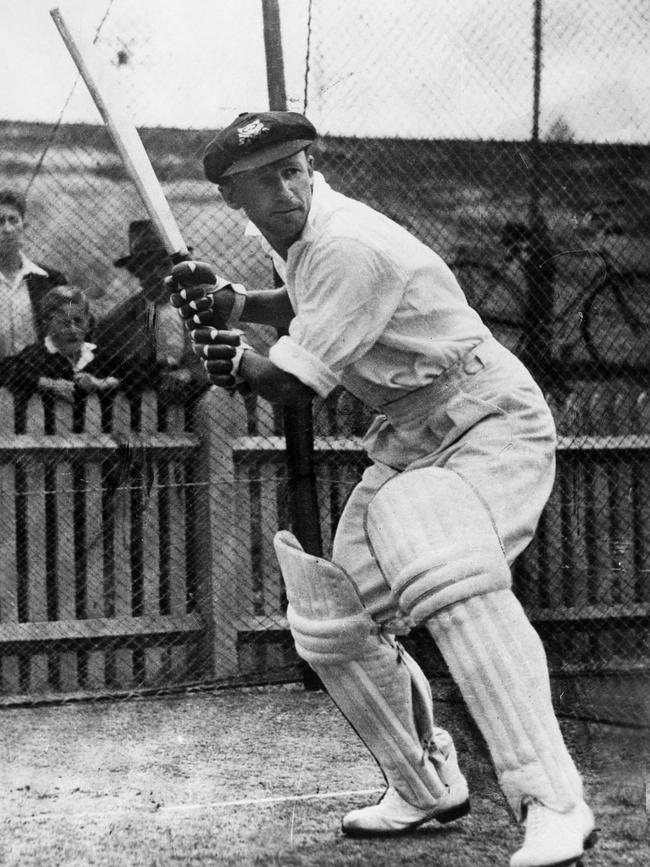Steve Smith’s ‘natural’ technique echoes Bradman and WG Grace
Steve Smith’s unorthodoxy is rooted in cricket royalty.

Steve Smith’s unorthodoxy is rooted in cricket royalty.
For the bedrock of his batting is a backlift that’s uncannily similar to the methods of WG Grace and Don Bradman.
Grace and Bradman both drew their bat in the direction of gully, just like Smith.
Grace’s motivation for adopting such an irregular method is unknown, but 54,211 first-class runs suggest it served him well.
Bowling machines, throwdown aids and high-performance managers were presumably pretty thin on the ground in the 1870s.
The Doctor was, however, an advocate of coaching, but no one persuaded him to straighten his backlift.
Bradman did it that way because it was the “natural” thing to do.
The Don and The Smith have much in common; hundreds for one, terminology for another.
Because Smith also selects the word “natural” when asked for his philosophy on matters technique.
“For me, I get out here,” Smith said, pointing his bat (the real one, not the pretend one) towards gully and definitely not saying he gets out there, he just gets his bat out there.
“But I do end up coming back around. And I keep my hands reasonably close to my body. And then I’m able to come down and hit the ball straight.”
Smith claims everything after his trigger movement is the same as a common or garden batsman. A batsman as common as his surname.
“I get myself in a still position,” he said in between throwdowns from Nasser Hussain in an interview for Sky Sports. “My head’s still. From there I don’t think I’m too unorthodox.”

If being different is unorthodox then Smith is guilty as charged on multiple counts. The preponderance of contemporary players — Joe Root for example — is to lift the bat high and straight.
If Smith was coaching, he wouldn’t fiddle with a youngster’s backlift — whatever works for them would be fine by the modern master.
“Anyone’s swing is really natural — I wouldn’t change anyone’s hands,” he said.
Natural. Natural fits. Because Smith is indeed a force of nature.
A quick search of antonyms for natural disgorges technological, contrived, affected, artificial and unusual. The language does its job well on this occasion as there’s nothing contrived, artificial or affected about Smith.
The English press pack thought Smith was unusual when the kid was picked part-way through the 2010-11 Ashes.

How they snickered when Smith said part of his role was to lighten the mood of a side that had suffered one of its most humiliating Ashes defeats in the second Test in Adelaide.
“I’ve been told that I’ve got to come into the side and be fun,” Smith said. “Whether it’s telling a joke or something like that, it’s to make sure we’re all upbeat and ready to go.”
When Smith was later recalled to the side a Fleet Street paper reported the “worldwide reaction was one of bemusement”.
“Such was his status as a figure of mock among English fans thanks to his idiosyncratic shuffly technique, his half-centuries at Trent Bridge and Old Trafford were put down to the flatness of the wicket,” the writer opined.
How the wheel has turned. Now the English media, laid low by Smith’s mastery, are requesting net audiences with the unchallenged king of batting. As Hussain himself said when Smith notched one of his Edgbaston hundreds: “Who’s mocking him now?”
Smith’s record-breaking feats are covered off elsewhere in these pages, but here’s something barely within mortal comprehension: his 211 in the fourth Test was his 26th hundred. If he continues scoring centuries at his present rate, and plays as many Tests as Ricky Ponting, he’ll finish with 61 Test tons.
The Don scored 29 hundreds.
Of course Bradman will always stand alone. But their shared philosophies on technique are as fascinating as they are eerie.
In The Art of Cricket, Bradman wrote that a backlift “should be natural and involuntary”.
“I was never conscious of my backlift. I did not take any particular notice where the bat went until I saw movie shots of me in action.
“Then it was clear my initial bat movement was almost invariably towards the slips. I am all in favour of a straight bat at the right time and place, but technique must be the servant, not the master.”
Even in Bradman’s day, some players were so concerned with getting their backlift straight or their elbow up, they all but forgot about hitting the ball.
“Better to hit the ball with an apparently unorthodox style than to miss it with a correct one,” Bradman counselled.



To join the conversation, please log in. Don't have an account? Register
Join the conversation, you are commenting as Logout